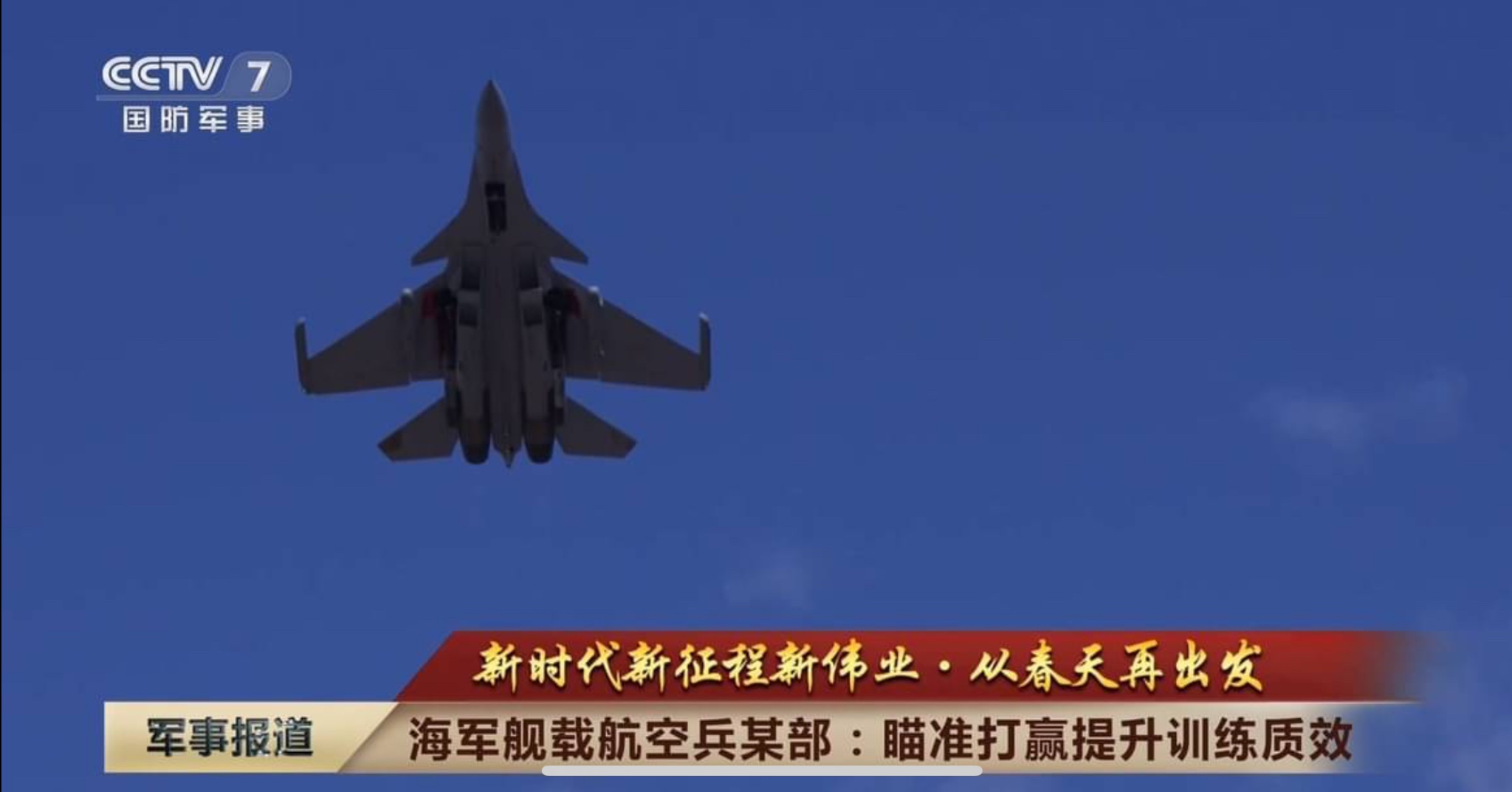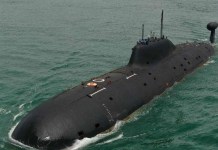An electronic warfare version of China’s carrier-borne J-15D fighter appeared in Chinese state media. It is based on the same concept as a fast-flying jet fighter doubling up as an EW aircraft, just like the US Navy’s E/A-18G Growler.
F-16s “Sitting Ducks” For Russian MiG-31 Fighters? Putin Warns Of Consequences Over Fighting Falcons
The clip from China Central Television (CCTV) of the J-15D shows two such pods in a bottom view while it flies overhead.
It is quite likely that they are the same pods as the ones on the J-16D. Interestingly, China was also inspired by the US’s F-16 C/D Block 52/60, which has a conformal fuel tank and a straighter spine to house EW systems, to develop the J-10D.
This makes the J-15D the third fighter aircraft-based EW platform in the Chinese fleet. The J-15 itself is a Chinese copy of the Russian Sukhoi Su-33, a carrier-borne aircraft. Reports claim that the J-15D is still being tested, and it is not clear if it has been slated for serial production.
Which Chinese Carrier Will J-15D Fly From?
It would be essential to analyze which of the three PLAN carriers—the Liaoning, the Shandong, or the upcoming Fujian—the J-15D might fly from, assuming it is inducted into the fleet.
Many video footages and images released on state media like CCTV and CGTN show the Liaoning and the Shandong carrying the J-15s during deployments and exercises in the western Pacific, South, and East China Seas and off the eastern seaboard of Taiwan. This allows the J-15 pilots to hone their carrier flying skills in exacting and demanding naval aviation environments.

But the J-15 is a heavyweight-class twin-engine fighter. It has a greater multirole-centric role than the J-35, as it can carry a larger payload of both air-to-air and air-to-sea/surface munitions.
Taking off on its own power with a larger loadout from a Short Take-Off Barrier-Arrested (STOBAR) carrier with a ski jump like the Liaoning or the Shandong would be difficult. A Catapult Assisted Take-Off and Barrier Arrested (CATOBAR) configured flight deck would be more suited for the purpose.
With the Fujian, China directly adopted an Electromagnetic Launch System (EMALS) instead of a steam-powered system for its catapult, giving it even more power to launch heavier weights.
These facts suggest that the J-31/J-35 is inherently not a heavy platform and appears suited for combat air patrol (CAP) and air superiority roles to protect carrier strike groups (CSG) from aerial threats, including adversary aircraft and anti-ship missiles.
Meanwhile, the larger and more powerful J-15 can carry the bulk of the anti-ship missiles and is also used in clashes against comparable fighters like the F/A-18 Super Hornet.
However, the J-15 also has a catapult-launched variant, the J-15T, which too, has appeared in photographs over the years. Described as a “demonstrator” aircraft, it was observed to have a modified front landing gear with an ‘arm’ to lock with a catapult system before being flung from the carrier.
This modification and the EMALS system eliminates the need for the J-15 to take off on its power, unlike the J-15B. Some PLA analysts also believe that the Fujian will have a complement of J-15s, too. Therefore, the J-15T demonstrator is being readied to begin testing from the Fujian once its sea trials go into full swing.
J-15T, J-15D & Fujian Testing to Align
Two logical conclusions can be drawn from this reasoning. First, it is unlikely that the J-15D EW has catapult-launch compatibility on its front landing gear. Whether it is a fresh variant developed from the ground up or an older J-15 version upgraded to ‘D’ standards (J-15D) is not known.
Second, the Fujian does need a heavy strike capability and is certain to have a complement of J-15s. To sum up, Shandong and Liaoning might have a large complement of non-catapult-enabled J-15s along with some J-31/J-35s. The Fujian, however, would end up having J-31/J-35s as its leading combat platform.
Indeed, it can’t depend on J-15Ds from the Shandong or the Liaoning and would need its own fighter-based EW capability — unless PLAN decides to just strap an external EW pod on its J-31/J-35s.
However, being stealth jets means EW and Electronic Intelligence (ELINT) modules are inside the airframe, carried internally. External stores for stealth fighters, like the F-35, usually consist of ordnance and fuel tanks when maintaining stealth is not a priority.
Let us assume that the J-15D is non-catapult-enabled. Its technology and tactics are still being refined on the Shandong and Liaoning by the time the J-15T demonstrator finishes testing from Fujian, and PLAN decides to go for serial production for a missionized variant.
This mass-production model would have the catapult-friendly landing gear from the J-15T and the wingtip EW pods of the same quality as the J-15D.
The EMALS catapult can also launch the new naval KJ-600 Airborne Early Warning (AEW). This larger and heavier aircraft would be central in both offensive and defensive radar surveillance roles, trading information with the J-15, J-15D, and the J-31/J-35.
Like the electronic warfare J-16D and the E/A-18G Growler, which fly with the J-11s, J-10s, J-16, Su-30MKK, and F/A-18 Super Hornet, the J-15D would fly with the J-15s and the J-31/J-35s providing electronic support and jamming from both enemy aircraft and ground-based air defense.
The EurAsian Times in a previous report, analyzed how a US Navy Growler taking off from the USS Dwight D. Eisenhower late in January as part of Operation Prosperity Guardian might be employed against the Yemen-based Houthis.
The J-15D, too, would be used similarly. Put differently, the appearance of the J-15D, introduction of the KJ-600 AEW, rapid development of the J-31/J-35, and launch of the Fujian mark the PLAN acquiring the full spectrum of capabilities in carrier naval aviation.
- The author can be reached at satamp@gmail.com
- Follow EurAsian Times on Google News




